Bosque del yunque: Visita el Bosque Nacional El Yunque
El Yunque National Forest
Recursos en línea con planes de estudio relacionados con El Yunque:
- El Yunque Net: aprenda cómo los huracanes y las disturbancias afectan el bosque tropical de El Yunque con información básica sobre el bosque, como la historia, el clima, la precipitación promedio y algunos de los posibles organismos que los estudiantes pueden ver en su visita al bosque tropical de El Yunque. http://elyunque.net/
- Aventura en video de los bosques lluviosos de Estados Unidos (templado y tropical): https://fsnaturelive.org/?page=adventure&id=7
- ¡Vamos al bosque! Sostenibilidad en El Yunque: www.vamosalbosque.org
Recursos en línea con planes de estudio relacionados con la naturaleza y STEM:
- Recursos para educadores de Áreas Silvestres: recursos que cubren Áreas Silvestres en preparación para una visita al Áreas Silvestre El Toro.
 https://www.wilderness.net/NWPS/k12
https://www.wilderness.net/NWPS/k12 - Natural Inquirer: Citizen Science : (bilingüe) Descargue Natural Inquirer, una revista de ciencia gratuita escrita para estudiantes de secundaria y preparatoria. Natural Inquirer tiene el mismo formato que un artículo científico para ayudar a los niños a aprender y amar la ciencia. Incluye ejemplos de proyectos para involucrarse y actividades en la salón de clases.
- PLUM Landing – PLUM es una asociación del USFS con WGBH, el principal proveedor de la programación de PBS Kids para la televisión pública. Ofrece actividades científicas diseñadas para niños de 6 a 9 años (y sus familias), y la mayoría están disponibles en inglés y en español. Hay aplicaciones y videos, y actividades para familias, programas después de la escuela, clubes y campamentos de verano. https://pbskids.org/plumlanding/index.html
- FSNatureLive: Ofrece el aprendizaje de la naturaleza a través de nuestra serie de transmisiones por Internet, y recursos educativos en línea.
 No importa dónde se encuentre en el mundo, visite nuestros programas LIVE para conocer de forma emocionante los murciélagos, las mariposas, el cambio climático, los humedales y mucho más. Cada área temática contiene recursos para maestros, incluidos proyectos de ciencia ciudadana. https://fsnaturelive.org/
No importa dónde se encuentre en el mundo, visite nuestros programas LIVE para conocer de forma emocionante los murciélagos, las mariposas, el cambio climático, los humedales y mucho más. Cada área temática contiene recursos para maestros, incluidos proyectos de ciencia ciudadana. https://fsnaturelive.org/ - Forest Service NatureWatch: Obtenga información sobre lugares interesantes para observar la naturaleza, acceder a materiales de enseñanza y encontrar aplicaciones que mejorarán su experiencia al aire libre. También encontrará el kit de herramientas y el programa de buceo de agua dulce. https://www.fs.fed.us/naturewatch
- Programa del patio de la escuela de LTER – https://lternet.edu/schoolyard-lter/
- EPA Teaching the Environment https://www.epa.gov/students
- Project Learning Tree: Proporciona a los educadores las herramientas, la capacitación y los recursos que necesitan para llevar la naturaleza y ambiente a sus salones de clases.
 https://www.plt.org/
https://www.plt.org/ - Las Aves del Caribe: El programa utiliza el plan de estudios de “BirdSleuth International” desarrollado por el Laboratorio de Ornitología de Cornell y adaptado para el contexto del Caribe. BirdSleuth es un plan de estudios de ciencia basado en la investigación que involucra a los niños en el estudio científico y la recopilación de datos reales a través de los proyectos de ciencia ciudadana de Cornell Lab of Ornithology, como eBird. https://www.birdscaribbean.org/birdsleuth-caribbean/
El Bosque Nacional El Yunque y la cotorra puertorriqueña: Una historia de peligro y perseverancia
Por Gabriel Figueroa Torres
Dos semanas después de que el huracán Irma golpeara a Puerto Rico, el huracán María arrasó el 20 de septiembre del 2017, y devastó la isla—mi hogar. Inundaciones, deslizamientos de terrenos y vientos intensos destrozaron casas, derribaron árboles, borró infraestructura crítica y mató sobre 4,600 personas. Yo fui uno de los que tuvo suerte. Hubo días en los que mi familia y yo cargábamos galones de agua desde el río y lavábamos nuestra ropa con tablas de lavar. Sin electricidad, mirar el cielo de noche en completa oscuridad y hablar por horas se convirtieron en actividades nocturnas. Pero en medio de la tragedia y el caos, los puertorriqueños levantamos nuetras comunidades, limpiamos los escombros y llevamos suministros a las áreas más afectadas.
Yo fui uno de los que tuvo suerte. Hubo días en los que mi familia y yo cargábamos galones de agua desde el río y lavábamos nuestra ropa con tablas de lavar. Sin electricidad, mirar el cielo de noche en completa oscuridad y hablar por horas se convirtieron en actividades nocturnas. Pero en medio de la tragedia y el caos, los puertorriqueños levantamos nuetras comunidades, limpiamos los escombros y llevamos suministros a las áreas más afectadas.
Pensé sobre como los huracanes impactaron las especies en peligro de la isla, como la cotorra puertorriqueña—una de las aves en peligro más crítico en el mundo, con tan solo unos 180 individuos en la naturaleza antes de que estos huracanes azotaran la isla. La cotorra depende de el Bosque Nacional El Yunque en encontrado al este de Puerto Rico—la única selva tropical húmeda en el Sistema Forestal Nacional de EEUU.
Image
Jan Paul Zegarra, USFWS
Aunque es relativamente pequeño, unos 29,000 acres, El Yunque es uno de los bosques más biológicamente diversos, proveyendo un refugio a una variedad de flora y fauna, incluyendo 13 especies enlistadas como en amenaza o en peligro en la Ley de Especies en Peligro. Los ecosistemas y especies en Puerto Rico se han podido adaptar históricamente a huracanes que proveen beneficios al ecosistema, así como el ciclo de nutrientes. Pero con el aumento del cambio climático, ahora los huracanes son más intensos y azotan la isla más frecuentemente. La mayor cantidad de lluvia y vientos fuertes derriban más árboles e inundan el terreno delicado del bosque, alterando el hábitat de las especies. Según caen los arboles, las cotorras pierden area de anidaje, su fuente principal de alimento (frutas) junto con la cubierta del follaje del bosque, haciéndolas más vulnerables a depredadores.
Los ecosistemas y especies en Puerto Rico se han podido adaptar históricamente a huracanes que proveen beneficios al ecosistema, así como el ciclo de nutrientes. Pero con el aumento del cambio climático, ahora los huracanes son más intensos y azotan la isla más frecuentemente. La mayor cantidad de lluvia y vientos fuertes derriban más árboles e inundan el terreno delicado del bosque, alterando el hábitat de las especies. Según caen los arboles, las cotorras pierden area de anidaje, su fuente principal de alimento (frutas) junto con la cubierta del follaje del bosque, haciéndolas más vulnerables a depredadores.
Mucho antes de que Cristobal Colón comenzara la colonización de Puerto Rico, los huracanes eran una gran parte de la vida de los indígenas taínos. En busca de protección del espíritu malo “Juracán”, los taínos se apresuraron al pico de las montañas de Luquillo conocidas para ellos como “Yuke”. Mientras las tormentas pasaban, los taínos oraban al espíritu bueno “Yokahu” en las montañas que hoy en día forman parte del bosque nacional El Yunque. Este ahora sirve de refugio para la vida silvestre de la isla, así como una vez lo fue para los taínos.
Este ahora sirve de refugio para la vida silvestre de la isla, así como una vez lo fue para los taínos.
Cuando Colón llegó a las playas de lo que se conocía como “Borikén” en 1493, alrededor de un millón de cotorras puertorriqueñas volaron através de las montañas boscosas de la isla. Desde entonces, estas aves han sido cazadas por agricultores, capturadas por la industria de mascotas y obligadas a migrar a terreno más alto. La pérdida de sobre 90% de los bosques de Puerto Rico, primero por la agricultura y luego a la explotación dieron el mayor golpe a la especie forzándola a retirarse hacia El Yunque, el único lugar donde sobrevivieron las cotorras por más de 70 años. Aun así el bosque nacional provee menos hábitat adecuado que áreas de menor elevación ya que las temperaturas son menores, la humedad es mayor y las aves deben competir con otras especies.
La cotorra puertorriqueña ha batallado contra la adversidad por mucho tiempo. Para el 1975, la población bajó a 13 individuos. Los huracanes se han vuelto una gran amenaza para la especie que está colgando de un hilo y depende de un programa de cría en cautiverio para suplementar la población silvestre. El huracán María aniquiló la población silvestre del Bosque Nacional El Yunque de aproximadamente 55 cotorras.
Los huracanes se han vuelto una gran amenaza para la especie que está colgando de un hilo y depende de un programa de cría en cautiverio para suplementar la población silvestre. El huracán María aniquiló la población silvestre del Bosque Nacional El Yunque de aproximadamente 55 cotorras.
Image
Jan Paul Zegarra, USFWS
Al enfrentar esta pérdida, los administradores forestales se preguntan como El Yunque puede continuar avanzando la recuperación de la especie especialmente considerando el habitat subóptimo del bosque y la mayor vulnerabilidad a huracanes en comparación con el área oeste de Puerto Rico. Los científicos creen que el bosque nacional continúa siendo importante para la supervivencia de las cotorras, y tres poblaciones adicionales deben establecerse para tener mayor seguridad ante amenazas severas como los huracanes. Por suerte, el gobierno reestableció una población en el Bosque Río Abajo en el área oeste de la isla justo antes de los huracanes del 2017.
El Servicio Forestal de los Estados Unidos maneja El Yunque y está obligado por el Acta de Especies en Peligro y sus propias regulaciones a ayudar en la recuperación de especies en peligro de extinción que se encuentren en su territorio.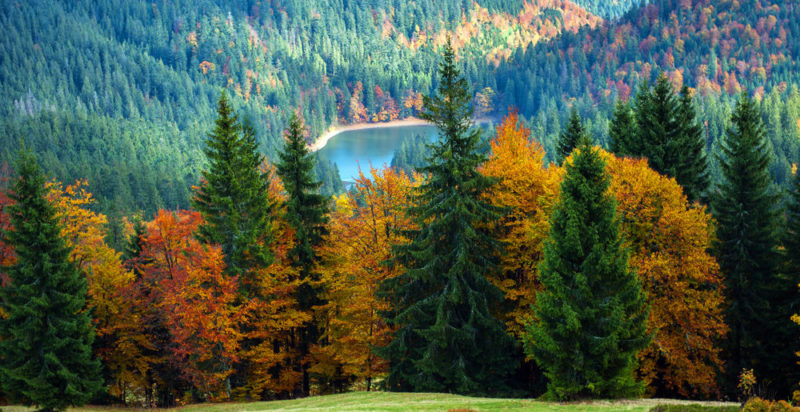 El Servicio Forestal recientemente adoptó un Plan de Manejo Revisado para guiar actividades incluyendo la conservación de vida silvestre. Aunque el plan fue, en gran parte, desarrollado antes de los huracanes Irma y María, éste incluye provisiones para esto, por ejemplo, dirigir al Servicio Forestal a proteger y mejorar el hábitat de anidaje de las cotorras, establecer áreas de amortiguamiento para impeder disturbios al área de anidaje, apoyar los programas de cría en cautiverio y llevar acabo monitoreo anual de la población de cotorras en el bosque. Adicionalmente, el Servicio Forestal ha colaborado con el Servicio de Pesca y Vida Silvestre y el Departamento de Recursos Naturales y Ambientales desde los 1970 para reintroducir cotorras al bosque con esperanzas de establecer una población viable.
El Servicio Forestal recientemente adoptó un Plan de Manejo Revisado para guiar actividades incluyendo la conservación de vida silvestre. Aunque el plan fue, en gran parte, desarrollado antes de los huracanes Irma y María, éste incluye provisiones para esto, por ejemplo, dirigir al Servicio Forestal a proteger y mejorar el hábitat de anidaje de las cotorras, establecer áreas de amortiguamiento para impeder disturbios al área de anidaje, apoyar los programas de cría en cautiverio y llevar acabo monitoreo anual de la población de cotorras en el bosque. Adicionalmente, el Servicio Forestal ha colaborado con el Servicio de Pesca y Vida Silvestre y el Departamento de Recursos Naturales y Ambientales desde los 1970 para reintroducir cotorras al bosque con esperanzas de establecer una población viable.
Image
Mark Davis, USFWS
Aunque está lejos del final, la historia de la cotorra puertorriqueña ilustra la importancia vital del Bosque Nacional El Yunque en la supervivencia de la especie. A pesar del efecto devastador de los huracanes de 2017, los bosques nacionales alrededor de los Estados Unidos y territorios serán cada vez más cruciales para la vida silvestre ya que proveen un refugio contra incendios, inundaciones y sequías al igual que los huracanes exacerbados por el cambio climático.
A pesar del efecto devastador de los huracanes de 2017, los bosques nacionales alrededor de los Estados Unidos y territorios serán cada vez más cruciales para la vida silvestre ya que proveen un refugio contra incendios, inundaciones y sequías al igual que los huracanes exacerbados por el cambio climático.
Mientras la cotorra aún enfrenta retos, hay buenas noticias. El año pasado, 30 aves fueron liberadas en El Yunque. Con la población de Río Abajo, actualmente hay alrededor de 200 cotorras puertorriqueñas salvajes. Justo como nos levantamos de la peor temporada de huracanes de la isla, la cotorra puertorriqueña tambien lo hizo y mi esperanza es algún día poder ver esta increíble especie volando sobre la isla como alguna vez lo hizo.
The Spanish national team managed to avoid defeat in a friendly match with the Mexicans
World Champions Spaniards with great difficulty avoided defeat in a friendly match with Mexico at the famous “Azteca”. The Turkish national team under the leadership of Guus Hiddink beat the Romanians at home.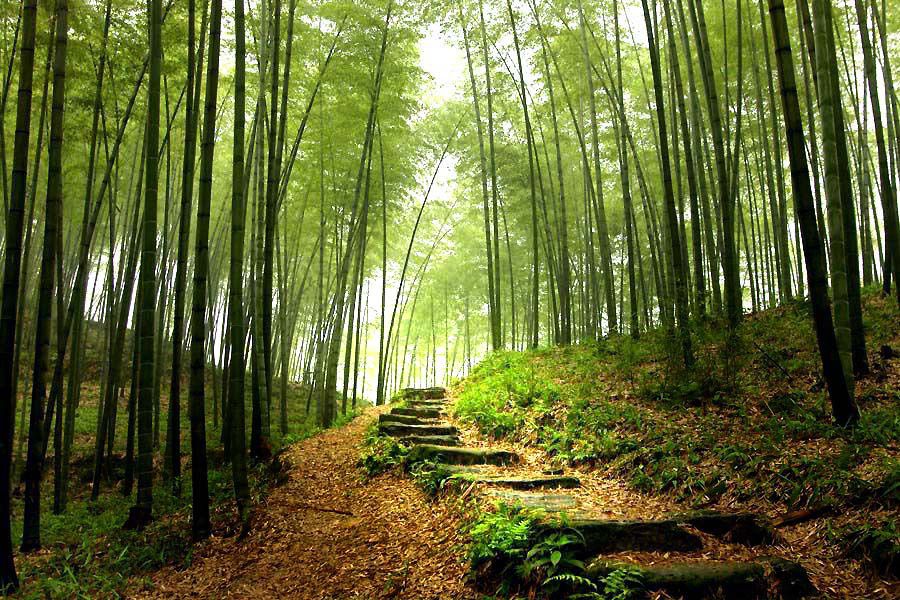 Germany was unable to defeat the Danes with the second team, England only thanks to Gerrard avoided shame in the match with the Hungarians, and the French experiment led to a fiasco in Oslo.
Germany was unable to defeat the Danes with the second team, England only thanks to Gerrard avoided shame in the match with the Hungarians, and the French experiment led to a fiasco in Oslo.
Guus Hiddink began official work at the head of the Turkish national team with a victory. The Turks at the end of the home match with the Romanians were able to score two goals: Emre Belyozoglu scored from the penalty spot, and then Arda Turan also scored. The match was held at the Sukru Saracoglu stadium, with Hiddink fielding players who have long been playing for the Turkish national team. Razvan Lucescu brought Alania midfielder Gheorghe Florescu back to the Romanian national team, who played a full match.
The world champions decided to open a new page in history, where the red fury is the best team both in Europe and the world, by traveling to the country of the Aztecs, where 24 years ago the Spaniards made one of their unsuccessful attempts to win the title, stopping at a fatal stage quarter-finals in the penalty shootout with the Belgians.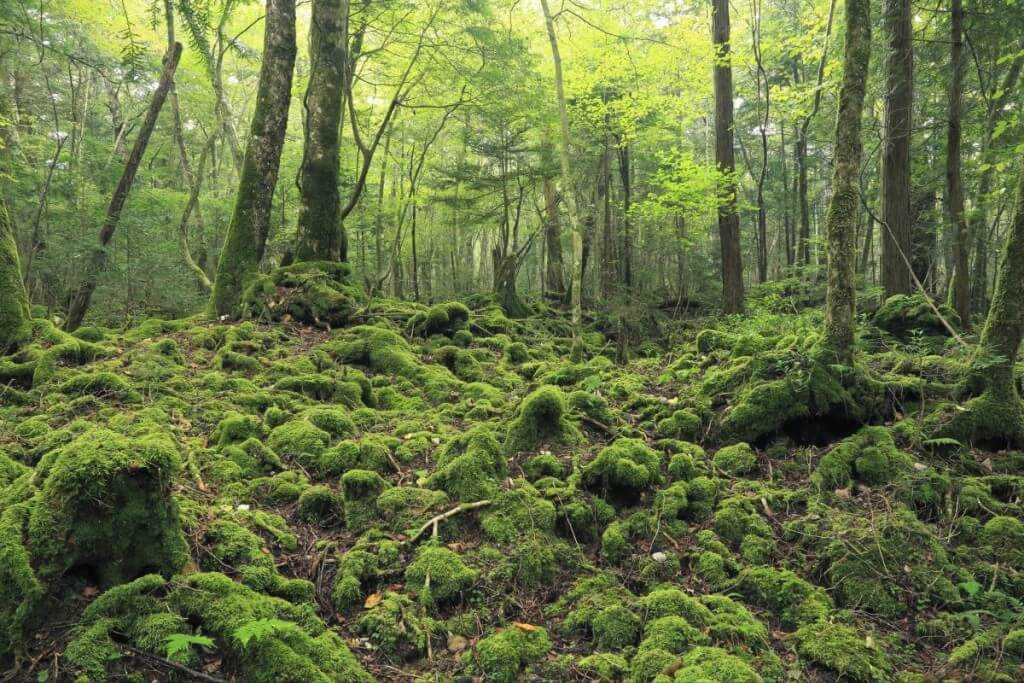 Vicente del Bosque on the famous “Azteca” from the first minutes put up only three main players of the World Cup model – Casillas (before the match he showed the audience the World Cup), Puyol and Busquets, although only the left back of Montreal and the “opornik” Bruno Soriano can be considered newcomers to this commands. The rest are world champions, and Cazorla won the continental championship.
Vicente del Bosque on the famous “Azteca” from the first minutes put up only three main players of the World Cup model – Casillas (before the match he showed the audience the World Cup), Puyol and Busquets, although only the left back of Montreal and the “opornik” Bruno Soriano can be considered newcomers to this commands. The rest are world champions, and Cazorla won the continental championship.
The Mexicans, on the other hand, the players who played in the World Cup entered the field, the new coach of the Aztecs, Enrique Mesa, updated the goalkeeper line, where Guillermo Ochoa played first, and then Jesus Corona.
The role of striker this time was entrusted to Javier Hernandez, who had already opened the scoring with his goals for Manchester United.
Justified the hopes of “Chicarito” and now, already in the 12th minute, enthralled the 100,000th arena. The pass went to Giovanni dos Santos, who was offside, but the ball went to the lone Hernandez, who calmly outplayed Casillas.
close
100%
Denmark – Germany – 2:2 (0:1)
Goals: Rommedal, 74; Juncker, 87 – Gomez, 19; Helmes 73
Eminent guests continued to play as if nothing had happened, but there was no sharpness at the gates of Ochoa. In the 30th minute, Cazorla shook the crossbar with a crazy blow, but this episode was not the result of meaningful actions. The response of the Mexicans was much sharper, but this time Casillas won the duel against Vela. During the break, del Bosque made five substitutions at once, and Xabi Alonso and Sergio Ramos entered the field, and later Xavi and Pique also appeared. Not having played the main team, the Spanish coach nevertheless revealed to the public all his stars, with the exception of the injured Iniesta and Fernando Torres. Sat on the bench and David Villa, and without him to score the Spaniards, as shown by the World Cup, is quite problematic. However, the departure of the hosts during the break of Hernandez, and then also Giovanni and Vela affected the game in the worst way.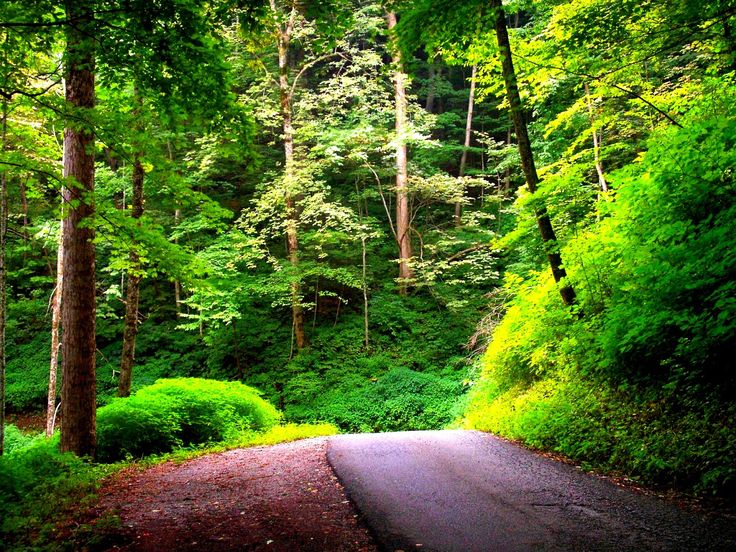
The world champions managed to equalize already in stoppage time, when David Silva scored, who was brilliantly assisted by Xavi. He could bring the Spaniards a victory in the last seconds, but it was hardly deserved.
Gazeta.Ru conducted online broadcasts of matches between Mexico and Spain.
The German national team played a match at the Parken with the Danes and achieved only a draw, although Joachim Löw put up an experimental squad.
Of those who entered the field in Copenhagen, only Jerome Boateng in South Africa was in the “base”, and many (Wiese, Beck, Schaefer, Thrösch, Hitzlsperger and Gertner) did not go there at all, like those who came on as a substitute. However, Morten Olsen, after the failure in South Africa, will have to build a new team at all.
close
100%
England – Hungary – 2:1 (0:1)
Goals: Gerrard, 69, 73 – Jegelka, 62-Aut
Nevertheless, one of the veterans, Dennis Rommedal, gave the hosts a chance for a draw.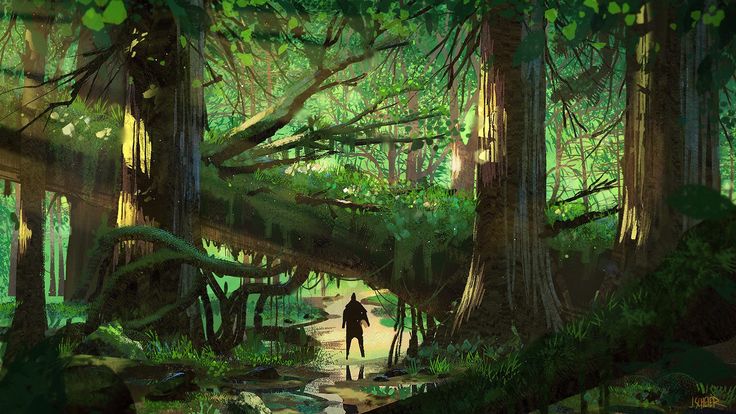 Perhaps only him and goalkeeper Sorensen can be attributed to the generation that shone in the zero years. At the 75th minute, the score became 0:2, and it was at this moment that Rommedal scored a signature goal, moving from the flank to the center and breaking into the far corner. And two minutes before the end of the meeting, Mads Junker from the Dutch Vitesse equalized the score – despite 29years, the figure in the Danish national team is new. The Germans, which is comparable to a miracle, scored Mario Gomez, who plays absolutely toothless in the Bundesteam: in the 20th minute he closed the cross of captain Hitzlsperger. The second goal in Germany was scored by Patrick Helmes, who came on as a substitute.
Perhaps only him and goalkeeper Sorensen can be attributed to the generation that shone in the zero years. At the 75th minute, the score became 0:2, and it was at this moment that Rommedal scored a signature goal, moving from the flank to the center and breaking into the far corner. And two minutes before the end of the meeting, Mads Junker from the Dutch Vitesse equalized the score – despite 29years, the figure in the Danish national team is new. The Germans, which is comparable to a miracle, scored Mario Gomez, who plays absolutely toothless in the Bundesteam: in the 20th minute he closed the cross of captain Hitzlsperger. The second goal in Germany was scored by Patrick Helmes, who came on as a substitute.
It is curious that on Wednesday the youth team of Germany, the reigning champion of the continent, suffered a hard defeat with a score of 1:4 from the Icelanders, having lost all chances to get into the play-offs.
Will miss Germany and the London Olympics.
Fabio Capello also has to solve difficult tasks of updating the squad – and he has changed his team by more than half.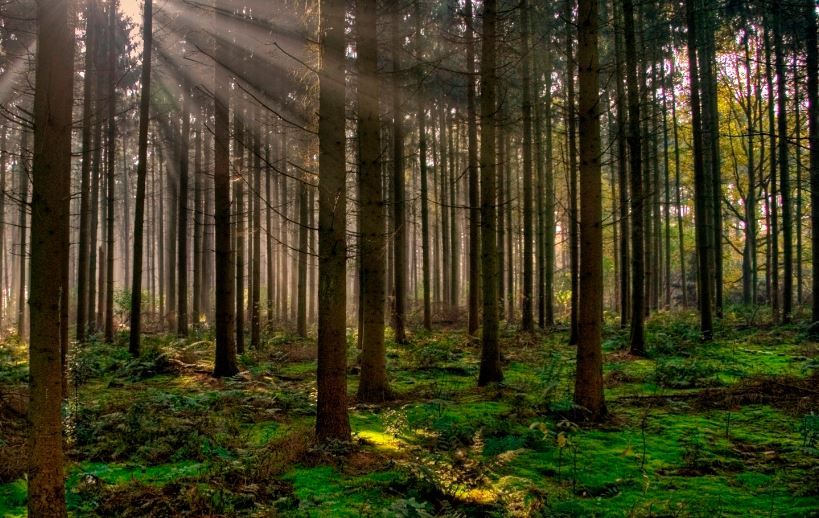 That left Terry, Gerrard, Lampard, Barry and Rooney, and it was Steven Gerard who saved the English from another shame. If in the first half the British played well in attack and reliably in defense, then after the break, when Capello made a series of substitutions, Wembley began to boo the hosts. In the 64th minute, a completely terrible thing happened: in one of the counterattacks, Phil Jegelka hit his own goal … And then Gerrard said his word, who first accurately shot from outside the penalty area, and then beat several rivals and put the hosts ahead. A strained but still victory for the England team, which still has a lot to do to regain the confidence of the fans. It is unlikely to be able to help the national team and David Beckham: Capello said that the 35-year-old midfielder is too old to play for her again…0003
That left Terry, Gerrard, Lampard, Barry and Rooney, and it was Steven Gerard who saved the English from another shame. If in the first half the British played well in attack and reliably in defense, then after the break, when Capello made a series of substitutions, Wembley began to boo the hosts. In the 64th minute, a completely terrible thing happened: in one of the counterattacks, Phil Jegelka hit his own goal … And then Gerrard said his word, who first accurately shot from outside the penalty area, and then beat several rivals and put the hosts ahead. A strained but still victory for the England team, which still has a lot to do to regain the confidence of the fans. It is unlikely to be able to help the national team and David Beckham: Capello said that the 35-year-old midfielder is too old to play for her again…0003
Zenit midfielder Sabolcs Husti spent the first half with the Hungarian national team.
The French national team appeared in Oslo in an updated form: no matter how Laurent Blanc opposed it, the federation disqualified all participants in the World Cup who went on strike in support of Nicolas Anelka. Of course, the players disgraced France in South Africa, but such radical steps, which are typical only for African countries, cannot lead to success. On September 3, France takes Belarus in a qualifying match, and the western neighbors will have excellent chances if the Gauls play with the same squad as in Oslo. With the exception of Samir Nasri and the replacements Lassan Diarra and Karim Benzema, Blanc had to make do with debutants who didn’t make it. Although Ben Arfa opened the scoring at the beginning of the second half, Erik Huseklepp scored a double and Norway won 2:1. This success should add confidence to the Scandinavians, because they have not been at major tournaments for 10 years …
Of course, the players disgraced France in South Africa, but such radical steps, which are typical only for African countries, cannot lead to success. On September 3, France takes Belarus in a qualifying match, and the western neighbors will have excellent chances if the Gauls play with the same squad as in Oslo. With the exception of Samir Nasri and the replacements Lassan Diarra and Karim Benzema, Blanc had to make do with debutants who didn’t make it. Although Ben Arfa opened the scoring at the beginning of the second half, Erik Huseklepp scored a double and Norway won 2:1. This success should add confidence to the Scandinavians, because they have not been at major tournaments for 10 years …
News about the main football tournament of the continent, the position of teams in the standings of qualifying groups and much more can be found on page Euro 2012.
VIEW / The World Cup is back at Azteca :: Sport
More than 30 friendly football matches were played on Wednesday. For European teams, these meetings became control before the start of the Euro 2012 qualifying round. It is significant that three of the four semi-finalists of the last World Cup failed to achieve victories: the national teams of Spain, Holland and Germany.
For European teams, these meetings became control before the start of the Euro 2012 qualifying round. It is significant that three of the four semi-finalists of the last World Cup failed to achieve victories: the national teams of Spain, Holland and Germany.
One of the most interesting fights of the evening was the game between the world champion team of Spain and the participant of the World Cup 2010 team of Mexico. The match was held at the famous Azteca Arena, which hosted the 1986 World Cup final – the one in which the Argentines, led by Maradona, celebrated success in an incredibly dramatic confrontation with the Germans.
The start activity of the Latin Americans led to the fact that already in the 12th minute, the newcomer of Manchester United Javier Hernandez opened the score
And now, 24 years later, the coveted World Cup has reappeared on the field of the legendary stadium: before the start of the game, the captain of the Spaniards, Iker Casillas, appeared in front of a hundred thousand people with a golden trophy won this summer on the football fields of South Africa. The Latin American public enthusiastically reacted to this momentous event.
The Latin American public enthusiastically reacted to this momentous event.
Spaniards’ head coach Vicente del Bosque brought to Mexico City a semi-experimental line-up compared to what he played at the tournament in South Africa. So, from the first minutes, left-back Nacho Monreal and defensive midfielder Bruno Soriano appeared on the field. Also, the mentor of the Spaniards entrusted a place at the base to defender Carlos Marchena and midfielder Santi Cazorla, who returned to the team, who missed the 2010 World Cup. Casillas, Puyol, Arbeloa, Busquets, as well as those who appeared on the fields of South Africa most often to replace Fabregas, Mata and Llorente, started the game from the “golden” squad.
The changes in the Mexican team were minimal. The new mentor of the team, Enrique Mesa, released in the main team almost all the same proven fighters who took part in the last World Cup. So, the veteran and team leader Rafael Marquez, who recently left Barcelona, reappeared on the field.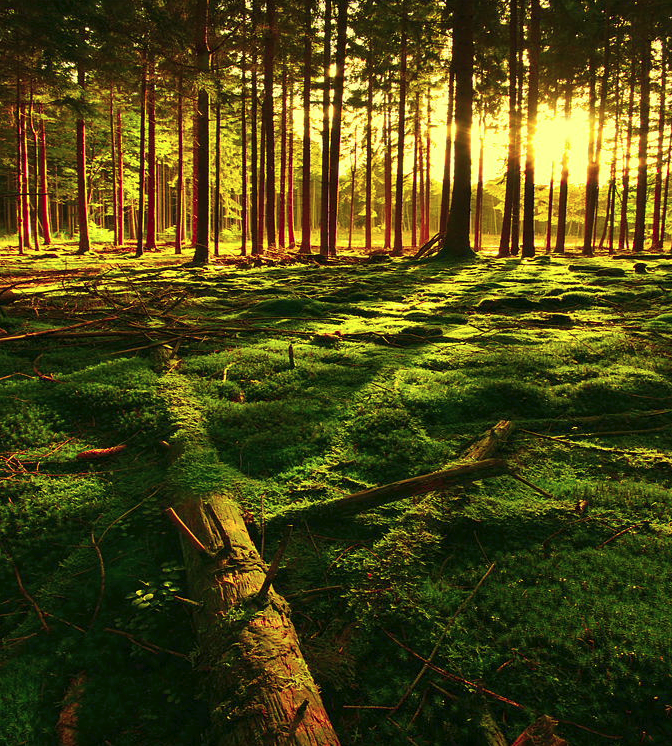 The main castling took place at the position of the goalkeeper: instead of Oscar Perez, Guillermo Ochoa took the place at the gate (Jesus Corona replaced him in the second half).
The main castling took place at the position of the goalkeeper: instead of Oscar Perez, Guillermo Ochoa took the place at the gate (Jesus Corona replaced him in the second half).
As in the 1/8 final match of the World Cup with the Argentines, the hosts started the game without timidity with the titled opponent. The starting activity of the Latin Americans led to the fact that already in the 12th minute, the newcomer of Manchester United, Javier Hernandez, opened the scoring. An error in the defense of the Spaniards led to the fact that the striker was alone in the shock position and sent the ball unhindered into the near bottom corner of the Casillas goal – 1:0. There was no limit to the delight of the audience gathered in the 105,000-seat arena.
The Spaniards, in their usual manner, played slowly, preferring to play the ball for a long time. However, for the time being, such tactics did not bring them any real dividends. Still, new combinations of players in attacking formations could not help but have an effect – the champions simply lacked teamwork to bring the matter to an accurate finishing blow.
Only in the 30th minute did Cazorla hit the crossbar, deciding to deliver an insidious blow from outside the penalty area. However, a goal, if it took place, perhaps, would not look logical for such a course of the game.
Meanwhile, the Mexicans, playing at home, also tried not to sit out for a long time in defense and, if possible, continued to seek their fortune at other people’s gates. One of these attacks could well have ended in a goal, but Vela, being in an advantageous position in front of the goal, could not beat Casillas – in this episode, the Spaniard captain fully justified the title of the best goalkeeper of the 2010 World Cup.
The opponents no longer had real opportunities to score a goal until the end of the half. During the break, del Bosque made five substitutions at once. On the pitch were world champions goalkeeper Valdes, defender Ramos, midfielders Alonso, midfielder David Silva and 2010 World Cup top scorer Villa. In turn, the Mexicans left the field one of the most prominent players in the first half – the author of the only goal Hernandez.
On the pitch were world champions goalkeeper Valdes, defender Ramos, midfielders Alonso, midfielder David Silva and 2010 World Cup top scorer Villa. In turn, the Mexicans left the field one of the most prominent players in the first half – the author of the only goal Hernandez.
The replacements allowed the Spaniards to improve the interaction of the players on the field, but nothing more – in general, the course of the game has changed minimally. The hosts were still burning with the desire to please their fans at all costs with a historic victory over the world champions, and therefore they put up the most serious resistance to the opponent.
In the middle of the half, del Bosque decided to make another substitution, throwing a new batch of champions into the fray: midfielder Xavi, defender Pique and forward Pedro. And the stars who recently returned from vacations could not find the keys to the defense of the hosts. The Mexicans successfully repulsed almost all the attacks of the guests, often even on the outskirts of the penalty area.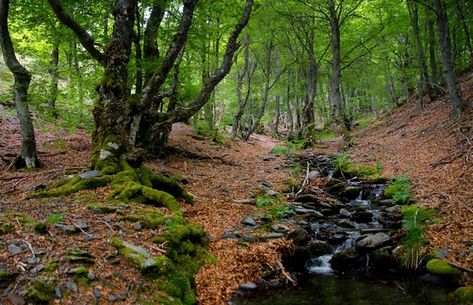
However, the impending sensation did not take place. The last minute of regular time was running out, when the ardor of the excited public unexpectedly cooled Silva’s accurate shot. The Spaniard sightedly sent the ball very close to the far post. He could have brought the Spaniards victory in the last seconds, but justice, as they say in such cases, has triumphed. As a result, a draw – 1:1.
After the match, the head coach of the Spaniards Vicente del Bosque commented on the outcome of the match: “The game turned out to be difficult, because the opponent was great on counterattacks. But in the end, we deserved a draw. I have to give all my wards ten out of ten. They all played well, and I am very happy about it, ”UEFA.com quotes him as saying.
Among the other matches of the day, several results are worth noting. The finalists of the last World Cup, the Dutch also finished their match in a draw. Acting as a reserve team in Donetsk, they played 1:1 with the Ukrainian team. Both goals were scored at the end of the match with an interval of two minutes: the Dutchman Lens opened the scoring in the 72nd minute, and Aliyev restored the balance a couple of minutes later.
Both goals were scored at the end of the match with an interval of two minutes: the Dutchman Lens opened the scoring in the 72nd minute, and Aliyev restored the balance a couple of minutes later.
In turn, the bronze medalists of the 2010 World Cup, the Germans, could not beat the Danes on their field – the game ended in a draw with a score of 2:2. By the 73rd minute of the match, the hosts were losing 0:2 (Gomez and Helmes scored against the Germans), but in the remaining time, Rommedal and Juncker brought the Danes a draw – 2:2.
Uruguay was the only one of the four World Cup semi-finalists to win. In sparring with the Angola team, the success of the South Americans was ensured by accurate shots by Cavani and Hernandez.
The Argentines, without the resigned head coach Maradona, won a guest victory over the Irish – 1:0. The winners in the middle of the first half scored a 22-year-old newcomer to Real Madrid Angel di Maria.
The debut of the head coach of the French national team Laurent Blanc came out unsuccessful.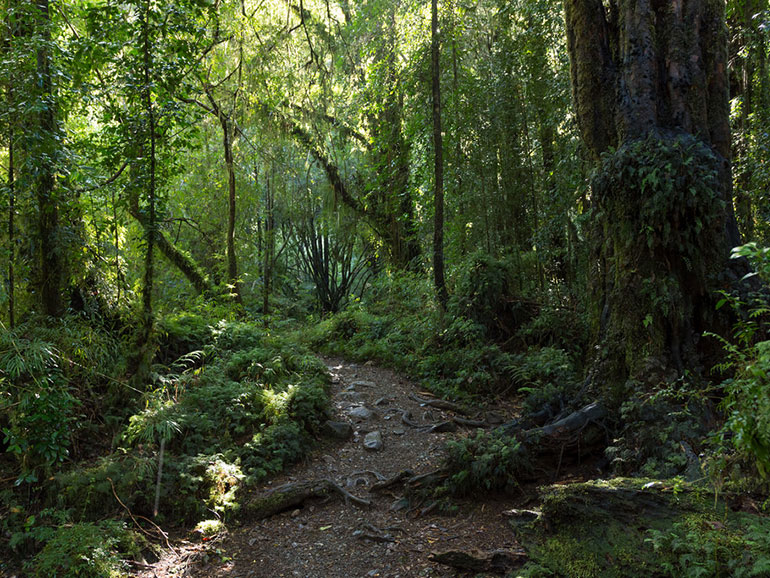
 https://www.wilderness.net/NWPS/k12
https://www.wilderness.net/NWPS/k12 No importa dónde se encuentre en el mundo, visite nuestros programas LIVE para conocer de forma emocionante los murciélagos, las mariposas, el cambio climático, los humedales y mucho más. Cada área temática contiene recursos para maestros, incluidos proyectos de ciencia ciudadana. https://fsnaturelive.org/
No importa dónde se encuentre en el mundo, visite nuestros programas LIVE para conocer de forma emocionante los murciélagos, las mariposas, el cambio climático, los humedales y mucho más. Cada área temática contiene recursos para maestros, incluidos proyectos de ciencia ciudadana. https://fsnaturelive.org/ https://www.plt.org/
https://www.plt.org/